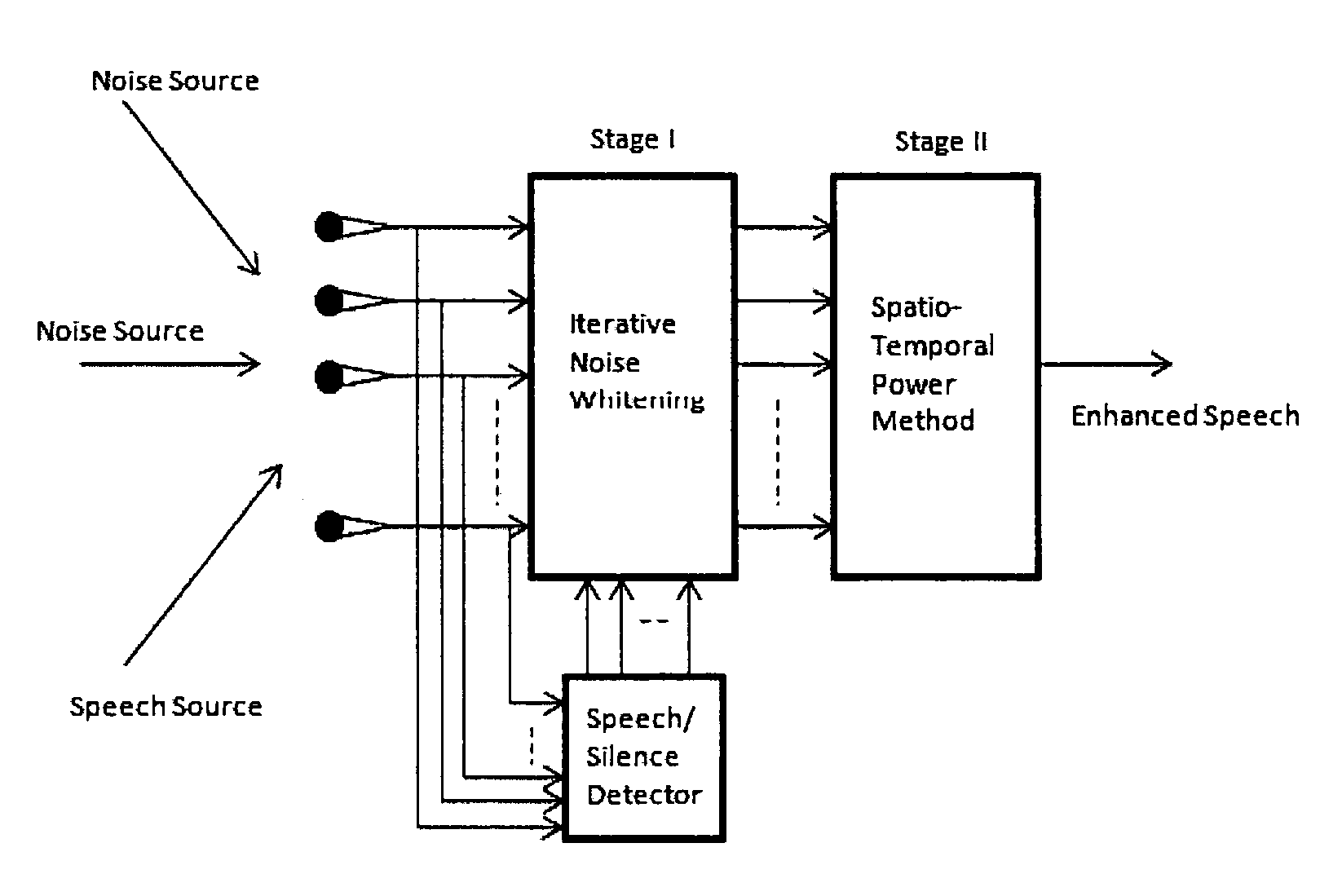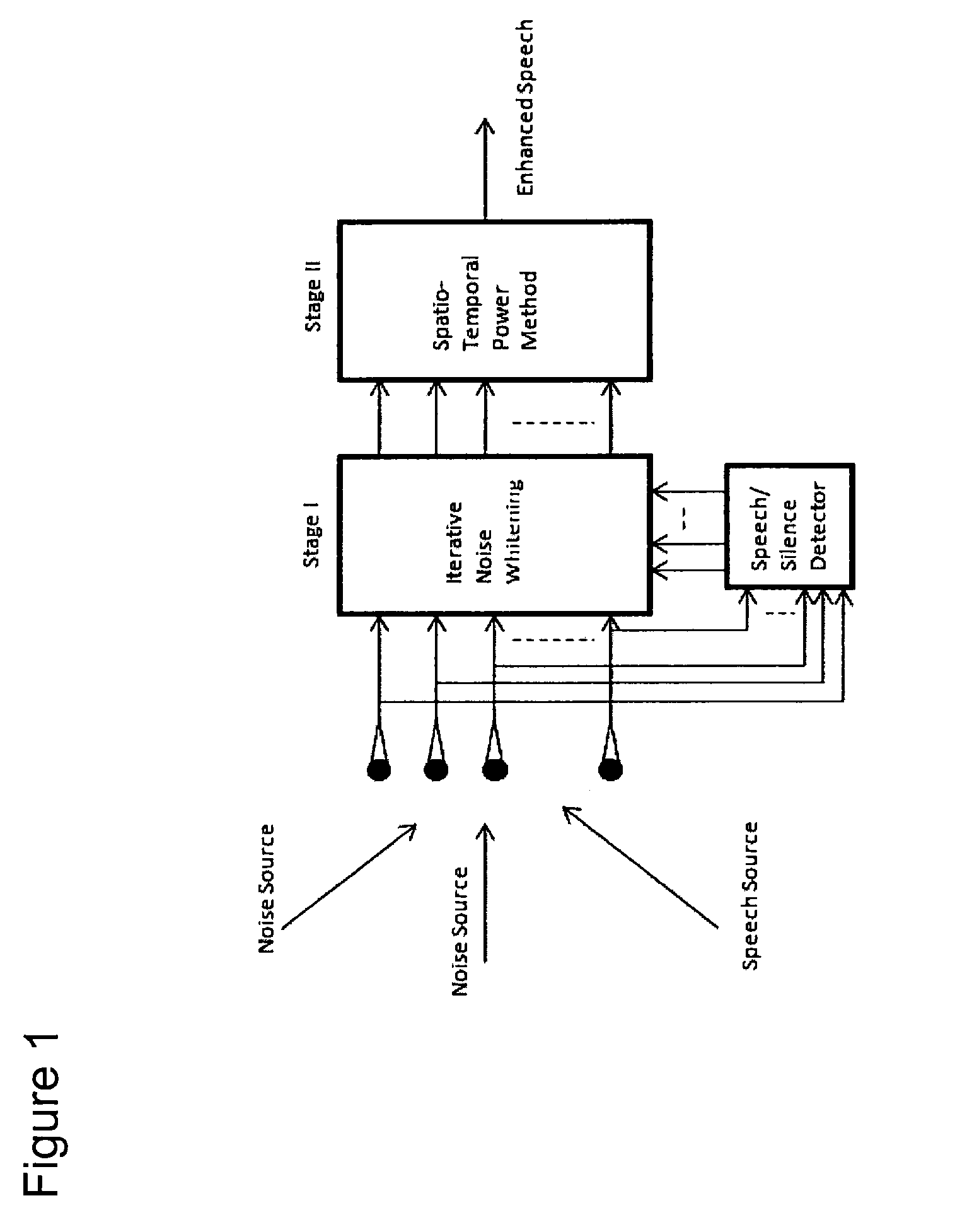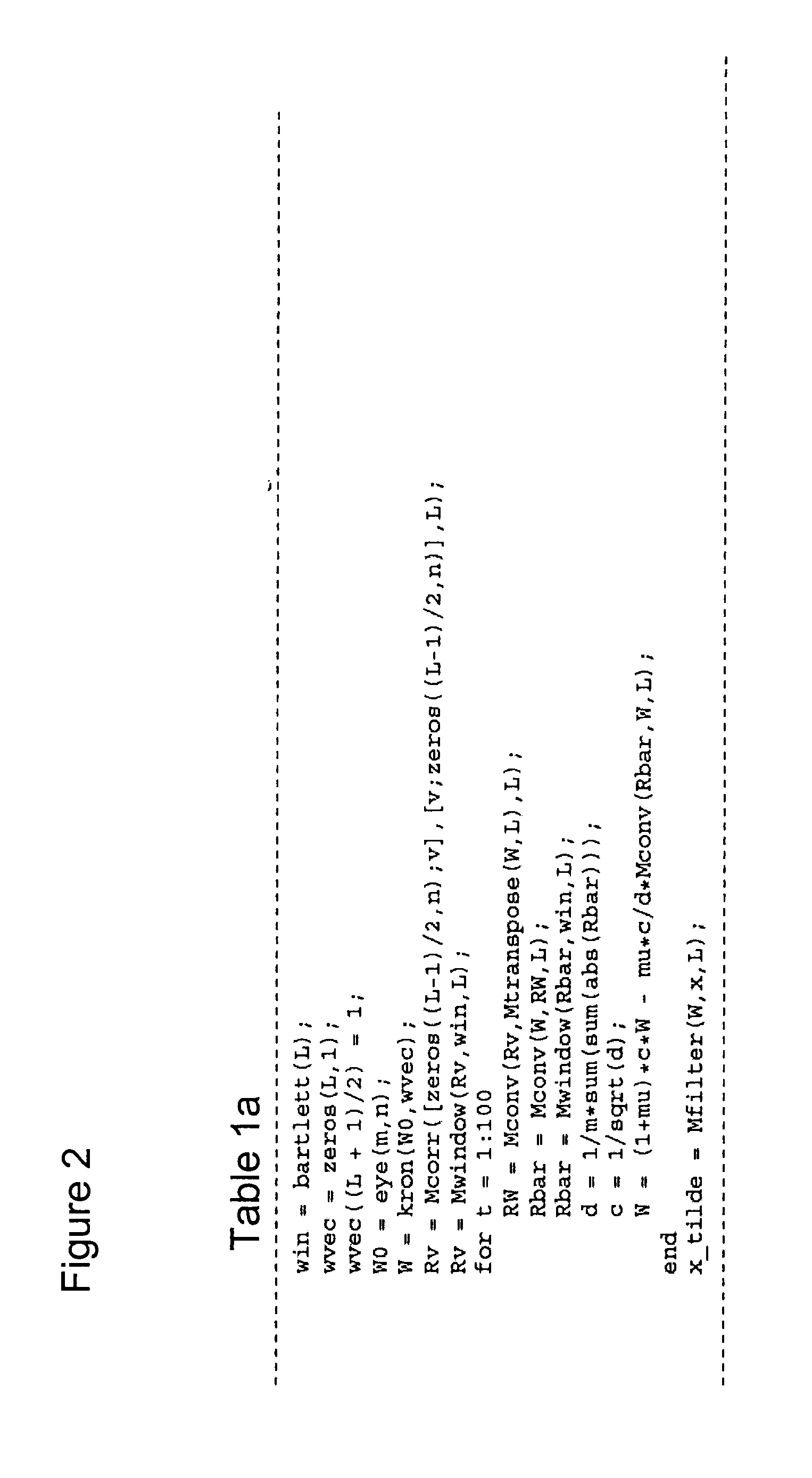Spatio-temporal speech enhancement technique based on generalized eigenvalue decomposition
a generalized eigenvalue and speech enhancement technology, applied in speech analysis, speech recognition, instruments, etc., can solve the problems of high computational complexity, problem still persisting, and optimal original subspace algorithm, and achieve the effect of reducing computational complexity
- Summary
- Abstract
- Description
- Claims
- Application Information
AI Technical Summary
Benefits of technology
Problems solved by technology
Method used
Image
Examples
Embodiment Construction
[0039]One embodiment of the present invention relates to a method of Spatio-Temporal Eigenfiltering using a signal model. For instance, letting s(l) denote a clean speech source signal which is measured at the output of an n-microphone array in the presence of colored noise v(l) at time instant l. The output of the jth microphone is given as
yj(l)=vj(l)+∑p=-∞∞hjps(l-p)=vj(l)+xj(l)(1)
where {hjp} are the coefficients of the acoustic impulse response between the speech source and the jth microphone, and xj(l) and vj(l) are the filtered speech and noise component received at the jth microphone, respectively. The additive noise vj(l) is assumed to be uncorrelated with the clean speech signal and possesses a certain autocorrelation structure. One of the goals of the speech enhancement system is to compute a set of filters wj, j=0, . . . , n−1 such that the speech component of xj(l) is enhanced while the noise component vj(l) is reduced. The filters wj are usually finite impulse response (F...
PUM
 Login to View More
Login to View More Abstract
Description
Claims
Application Information
 Login to View More
Login to View More - R&D
- Intellectual Property
- Life Sciences
- Materials
- Tech Scout
- Unparalleled Data Quality
- Higher Quality Content
- 60% Fewer Hallucinations
Browse by: Latest US Patents, China's latest patents, Technical Efficacy Thesaurus, Application Domain, Technology Topic, Popular Technical Reports.
© 2025 PatSnap. All rights reserved.Legal|Privacy policy|Modern Slavery Act Transparency Statement|Sitemap|About US| Contact US: help@patsnap.com



